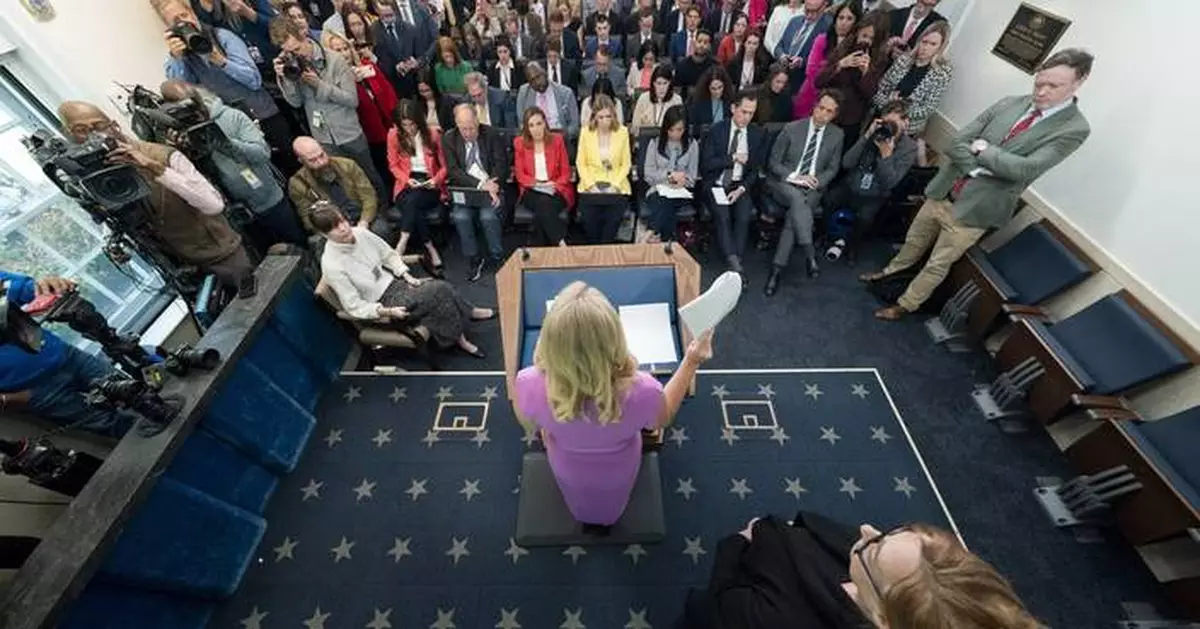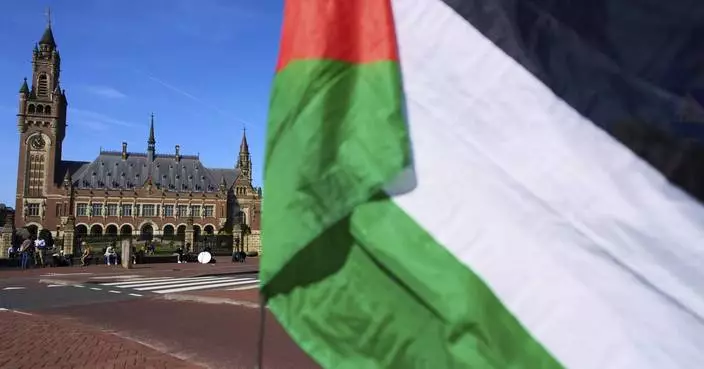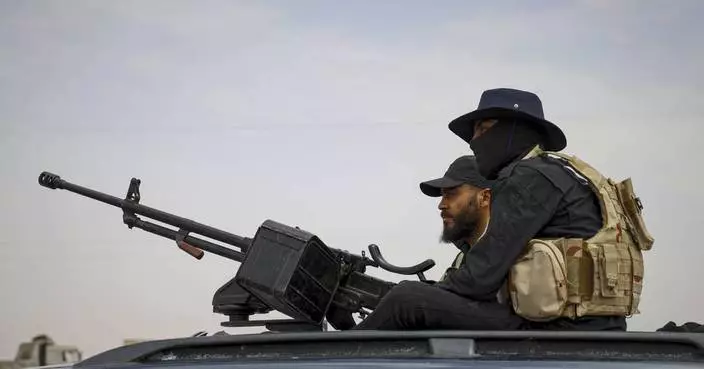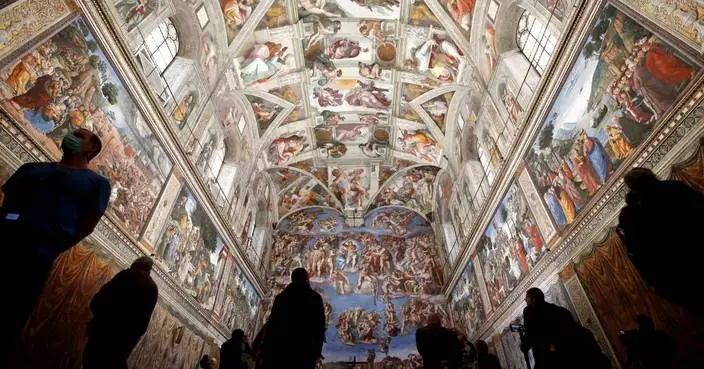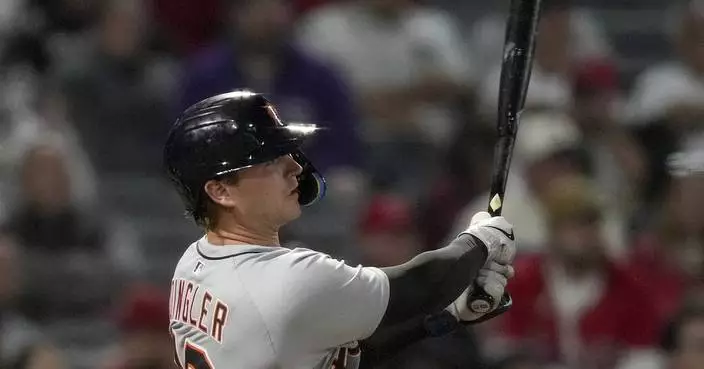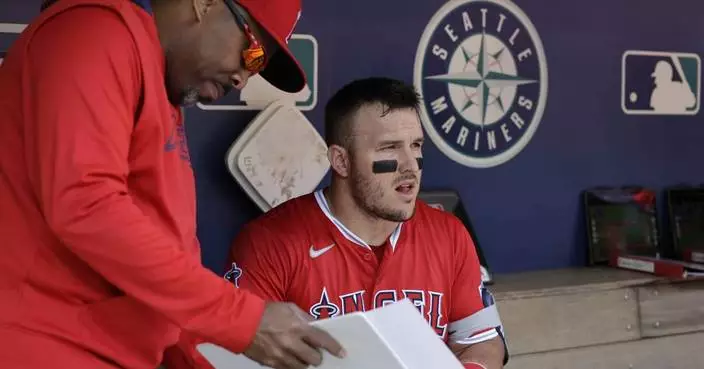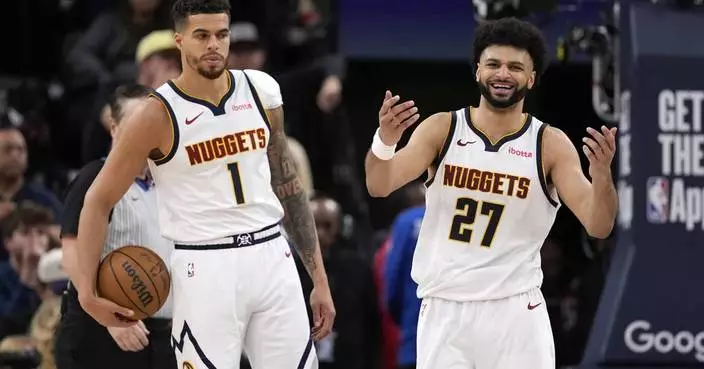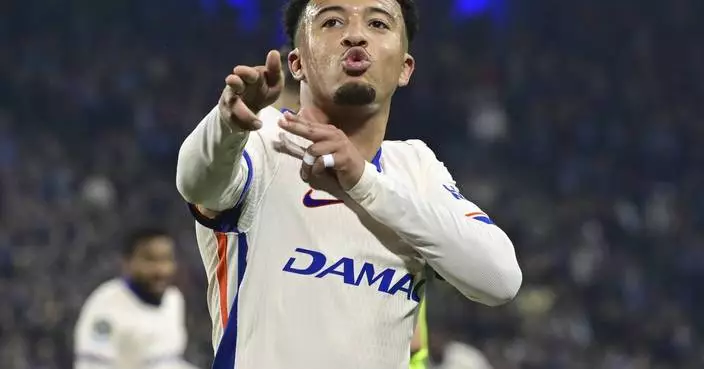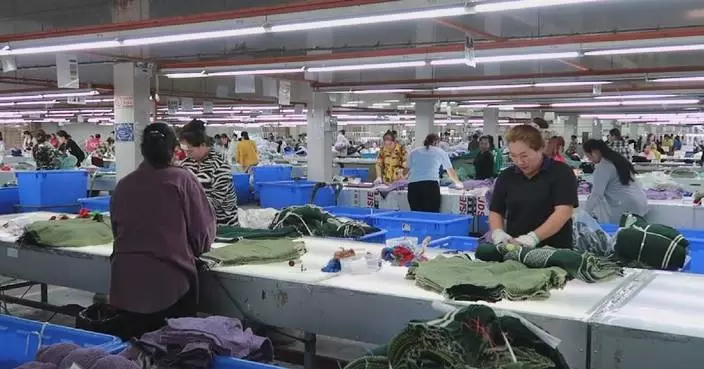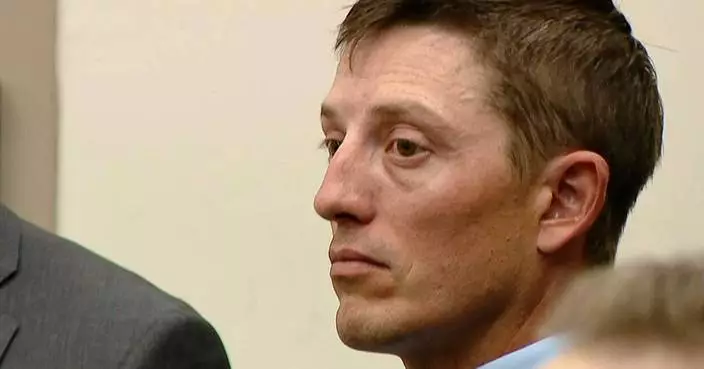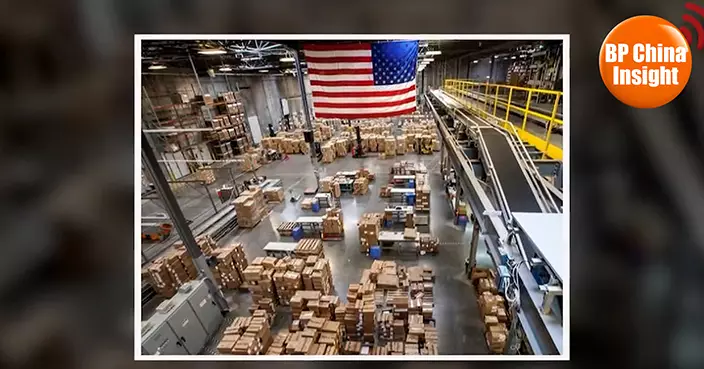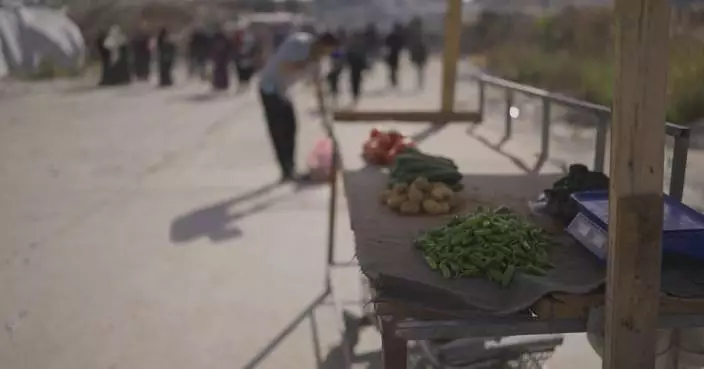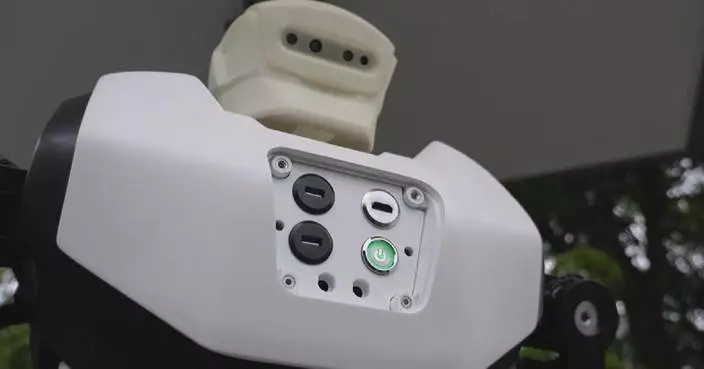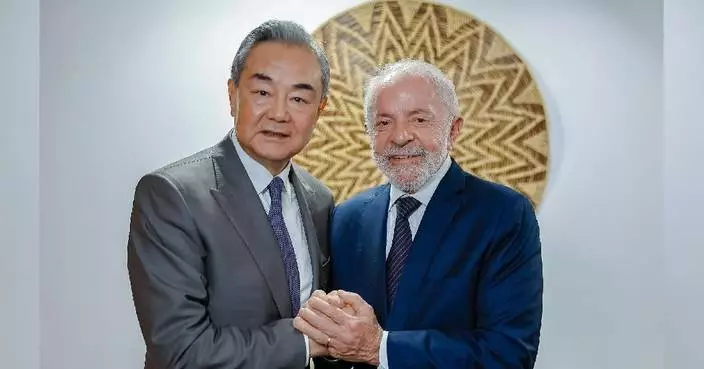WASHINGTON (AP) — A federal judge who ordered the Trump administration to stop blocking The Associated Press from presidential events refused Friday to take immediate steps to get White House officials to comply — an incremental development in a two-month dispute between the global news agency and administration officials over access.
The case, which has significant free-speech implications under the U.S. Constitution's First Amendment, centers on the government blocking AP’s access to cover events because the outlet won’t rename the Gulf of Mexico in its reports.
U.S. District Judge Trevor N. McFadden, who handed the AP a victory last week in its efforts to end the ban, said it’s too soon to say that President Donald Trump is violating his order — as the AP suggests.
“We are not at the point where we can make much of a determination one way or another,” said McFadden, ruling from the bench. “I don't intend to micromanage the White House.”
The AP's lawyer, Charles Tobin, wouldn't comment about the judge's decision after the proceedings. The White House issued no immediate comment.
For two months, the White House has essentially banned AP reporters and photographers from their traditional spot covering events in smaller spaces like the Oval Office and Air Force One. The AP says it’s a violation of its free-speech rights, enshrined in the First Amendment, to punish a news outlet for an editorial decision — an argument McFadden has endorsed.
In response, the White House this week issued a new press policy that occasionally lets the AP and other wire services into events it used to routinely cover at all times.
Since McFadden’s ruling took effect, an AP photographer was allowed into the Oval Office on Thursday after three days of being blocked. A reporter has yet to be allowed back in, but the White House said an AP reporter will be part of the coverage rotation on Saturday — when reporters will follow Trump in a van to where he plans to play golf.
In court, Tobin said the new policy is gamesmanship designed to diminish the outlet’s influence. “We think that the new policy really is a thumb in the nose at The Associated Press and this court,” he told McFadden.
The White House took clear steps to put last week’s ruling into effect, said Jane Lyons, an assistant district attorney who was representing the Trump team. “It is way too soon ... to say that it is a problem,” Lyons said.
McFadden said that the first few days since his order took effect gave him concerns that Trump’s team is “not proceeding in compliance here, or perhaps malicious compliance.” But the judge, appointed to the court by Trump during the president’s first term, said he has to assume that the administration is operating in good faith unless time proves otherwise.
He also wasn’t swayed by the AP’s argument that it’s unconstitutional for the president to have sole discretion over who covers him at these smaller events. The AP, mindful that a dispute over journalists’ access isn’t likely to move many in the public, has cast it as a broader issue of freedom of speech.
The AP’s decisions on what terminology to use are followed by journalists and other writers around the world through its influential stylebook. The outlet said it would continue to use Gulf of Mexico, as the body of water has been known for hundreds of years, while also noting Trump’s decision to rename it the Gulf of America.
It’s an issue likely to take months to wend its way through the courts The AP went before a three-judge panel of the U.S. Court of Appeals Thursday on the same issue about compliance. The Trump administration has said that it will appeal McFadden’s initial ruling.
David Bauder writes about media for the AP. Follow him at http://x.com/dbauder and https://bsky.app/profile/dbauder.bsky.social
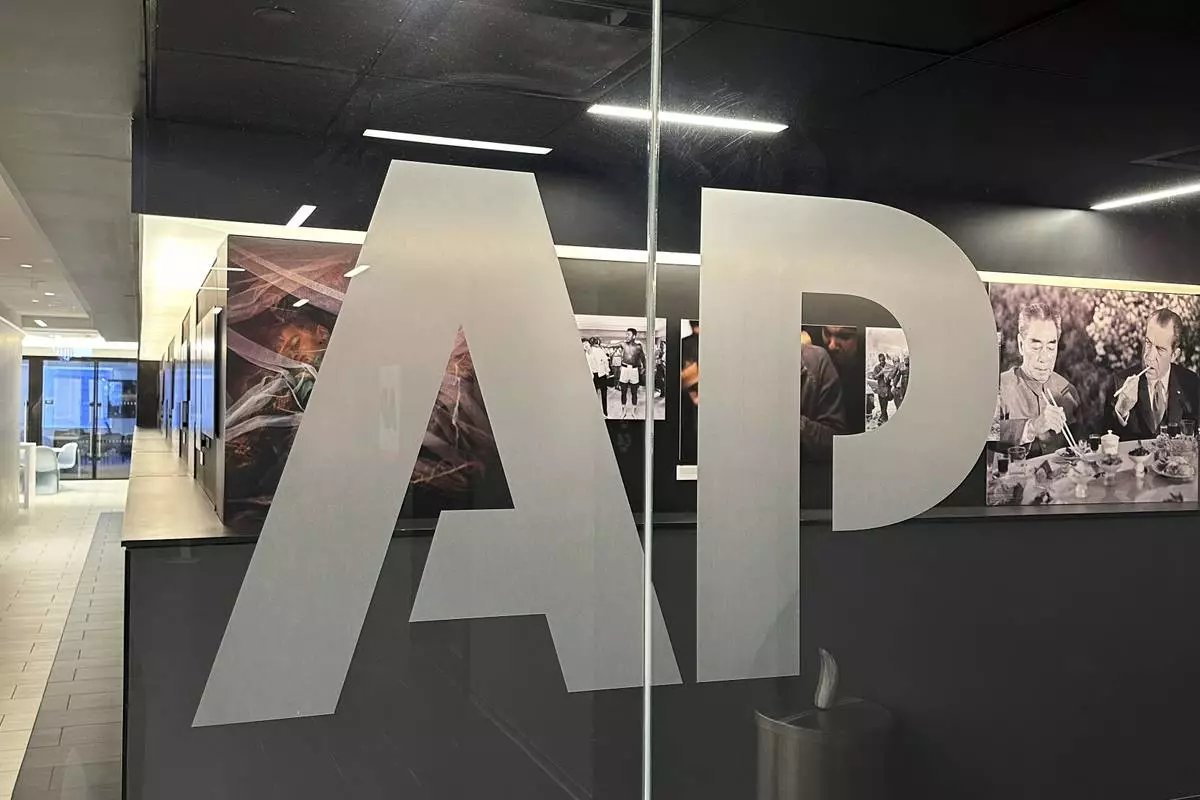
The Associated Press logo is displayed at the news organization's world headquarters in New York on Wednesday, April 9, 2025. (AP Photo/Aaron Jackson)
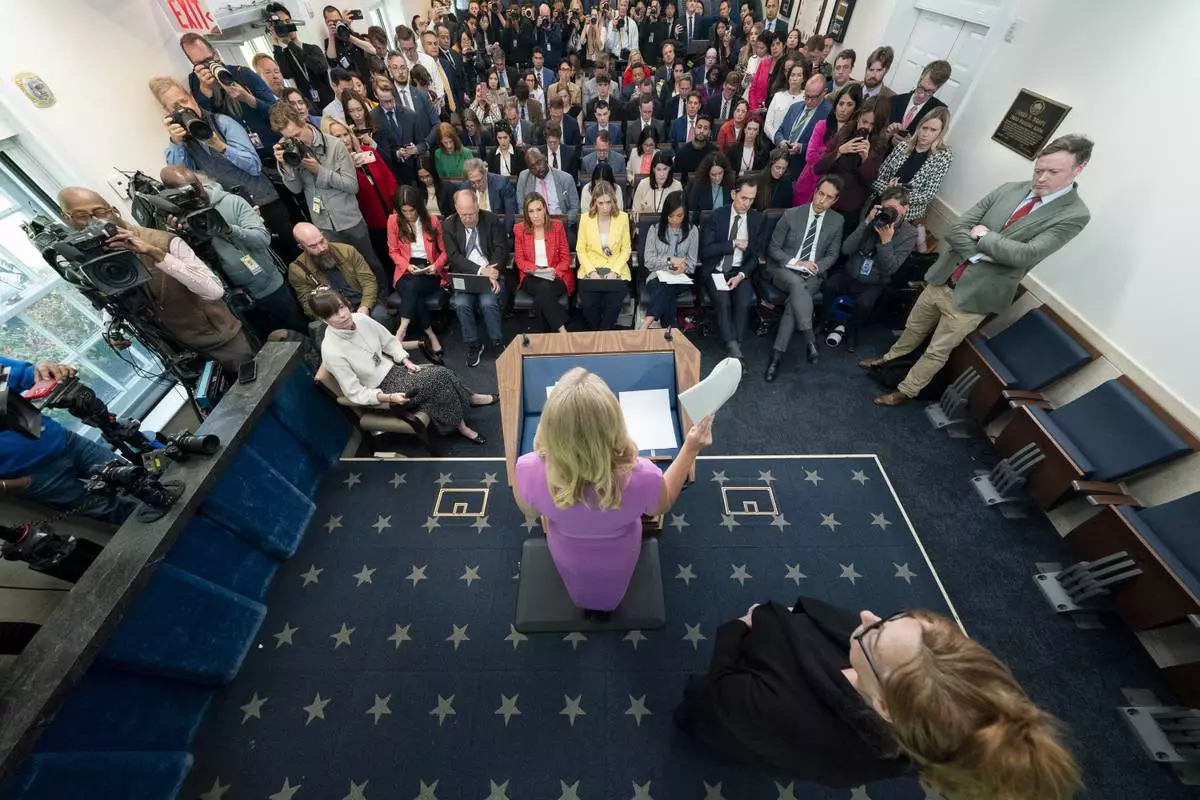
White House press secretary Karoline Leavitt speaks with reporters in the James Brady Press Briefing Room at the White House, Wednesday, April 16, 2025, in Washington, as Patty Morin, mother of Rachel Morin listens. (AP Photo/Alex Brandon)
VATICAN CITY (AP) — “Conclave,” the movie, may have introduced movie-goers to the spectacular ritual and drama of a modern conclave, but the periodic voting to elect a new pope has been going on for centuries and created a whole genre of historical trivia.
Here are some fun facts about conclaves past, derived from historical studies including Miles Pattenden's “Electing the Pope in Early Modern Italy, 1450–1700” and interviews with experts including Elena Cangiano, an archeologist at Viterbo's Palazzo dei Papi (Palace of the Popes).
In the 13th century, it took almost three years — 1,006 days to be exact — to choose Pope Clement IV's successor, making it the longest conclave in the Catholic Church’s history. It's also where the term conclave comes from — "under lock and key," because the cardinals who were meeting in Viterbo, north of Rome, took so long the town's frustrated citizens locked them in the room.
The secret vote that elected Pope Gregory X lasted from November 1268 to September 1271. It was the first example of a papal election by “compromise,” after a long struggle between supporters of two main geopolitical medieval factions — those faithful to the papacy and those supporting the Holy Roman Empire.
Gregory X was elected only after Viterbo residents tore the roof off the building where the prelates were staying and restricted their meals to bread and water to pressure them to come to a conclusion. Hoping to avoid a repeat, Gregory X decreed in 1274 that cardinals would only get “one meal a day” if the conclave stretched beyond three days, and only “bread, water and wine” if it went beyond eight. That restriction has been dropped.
Before 1274, there were times when a pope was elected the same day as the death of his predecessor. After that, however, the church decided to wait at least 10 days before the first vote. Later that was extended to 15 days to give all cardinals time to get to Rome. The quickest conclave observing the 10-day wait rule appears to have been the 1503 election of Pope Julius II, who was elected in just a few hours, according to Vatican historian Ambrogio Piazzoni. In more recent times, Pope Francis was elected in 2013 on the fifth ballot, Benedict XVI won in 2005 on the fourth and Pope Pius XII won on the third in 1939.
The first conclave held under Michelangelo's frescoed ceiling in the Sistine Chapel was in 1492. Since 1878, the world-renowned chapel has become the venue of all conclaves. “Everything is conducive to an awareness of the presence of God, in whose sight each person will one day be judged,” St. John Paul II wrote in his 1996 document regulating the conclave, “Universi Dominici Gregis.” The cardinals sleep a short distance away in the nearby Domus Santa Marta hotel or a nearby residence.
Most conclaves were held in Rome, with some taking place outside the Vatican walls. Four were held in the Pauline Chapel of the papal residence at the Quirinale Palace, while some 30 others were held in St. John Lateran Basilica, Santa Maria Sopra Minerva or other places in Rome. On 15 occasions they took place outside Rome and the Vatican altogether, including in Viterbo, Perugia, Arezzo and Venice in Italy, and Konstanz, Germany, and Lyon, France.
Between 1378-1417, referred to by historians as the Western Schism, there were rival claimants to the title of pope. The schism produced multiple papal contenders, the so-called antipopes, splitting the Catholic Church for nearly 40 years. The most prominent antipopes during the Western Schism were Clement VII, Benedict XIII, Alexander V, and John XXIII. The schism was ultimately resolved by the Council of Constance in 1417, which led to the election of Martin V, a universally accepted pontiff.
The cloistered nature of the conclave posed another challenge for cardinals: staying healthy. Before the Domus Santa Marta guest house was built in 1996, cardinal electors slept on cots in rooms connected to the Sistine Chapel. Conclaves in the 16th and 17th centuries were described as “disgusting” and “badly smelling,” with concern about disease outbreaks, particularly in summer, according to historian Miles Pattenden. “The cardinals simply had to have a more regular and comfortable way of living because they were old men, many of them with quite advanced disease,” Pattenden wrote. The enclosed space and lack of ventilation further aggravated these issues. Some of the electors left the conclave sick, often seriously.
Initially, papal elections weren’t as secretive, but concerns about political interference soared during the longest conclave in Viterbo. Gregory X decreed that cardinal electors should be locked in seclusion, “cum clave” (with a key), until a new pope was chosen. The purpose was to create a totally secluded environment where the cardinals could focus on their task, guided by God’s will, without any political interference or distractions. Over the centuries, various popes have modified and reinforced the rules surrounding the conclave, emphasizing the importance of secrecy.
Pope John XII was just 18 when he was elected in 955. The oldest popes were Pope Celestine III (elected in 1191) and Celestine V (elected in 1294) who were both nearly 85. Benedict XVI was 78 when he was elected in 2005.
There is no requirement that a pope be a cardinal, but that has been the case for centuries. The last time a pope was elected who wasn’t a cardinal was Urban VI in 1378. He was a monk and archbishop of Bari. While the Italians have had a stranglehold on the papacy over centuries, there have been many exceptions aside from John Paul II (Polish in 1978) and Benedict XVI (German in 2005) and Francis (Argentine in 2013). Alexander VI, elected in 1492, was Spanish; Gregory III, elected in 731, was Syrian; Adrian VI, elected in 1522, was from the Netherlands.
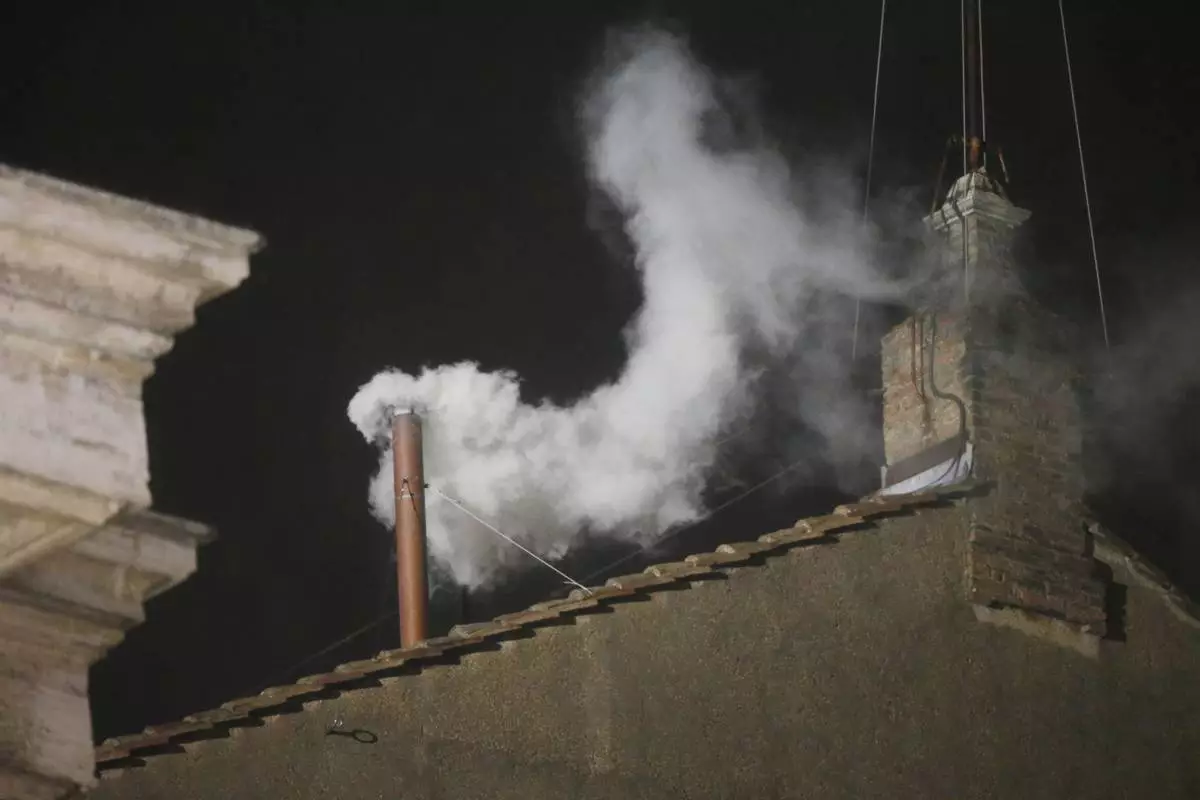
FILE - White smoke is seen billowing out from the chimney of the Sistine Chapel and announcing that a new pope has been elected on Wednesday, March 13, 2013. (AP Photo/Gregorio Borgia, File)
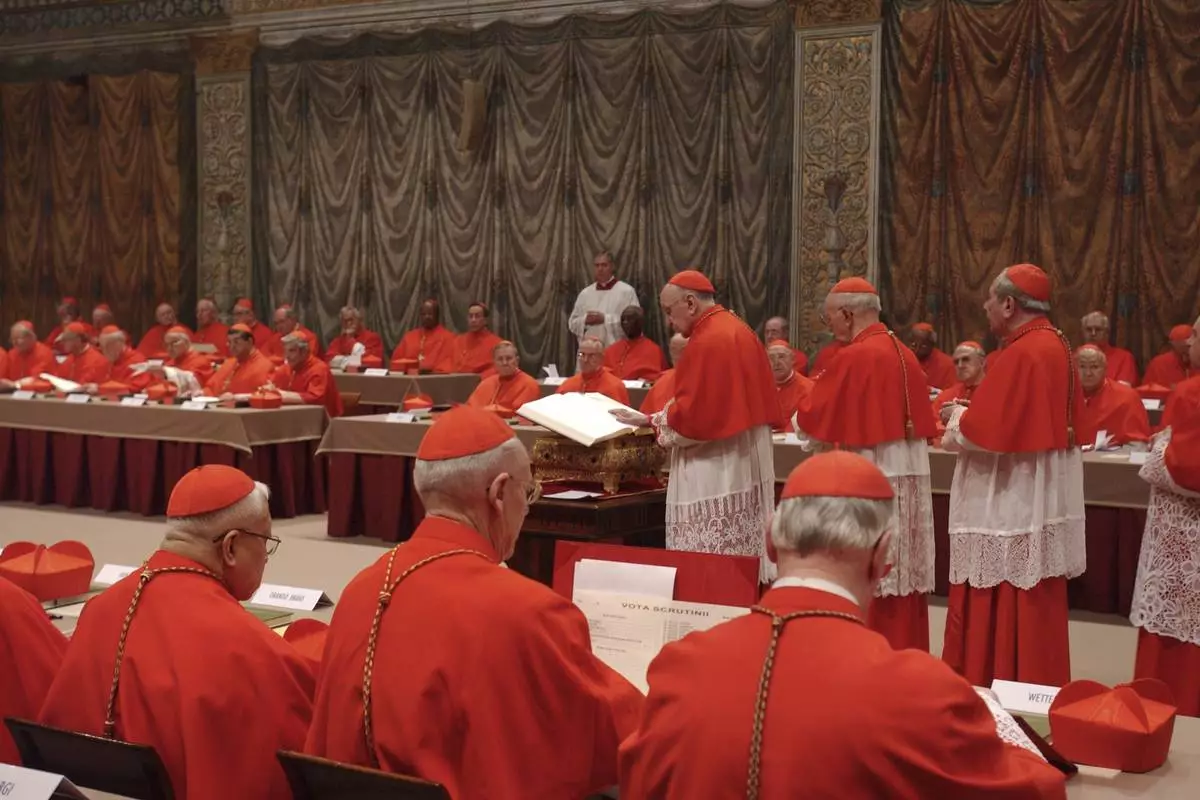
FILE - Italian Cardinal Giacomo Biffi, center, takes an oath at the beginning of the conclave to elect the next pope in the Sistine Chapel at the Vatican, Monday, April 18, 2005. (AP Photo/Osservatore Romano via AP, File)
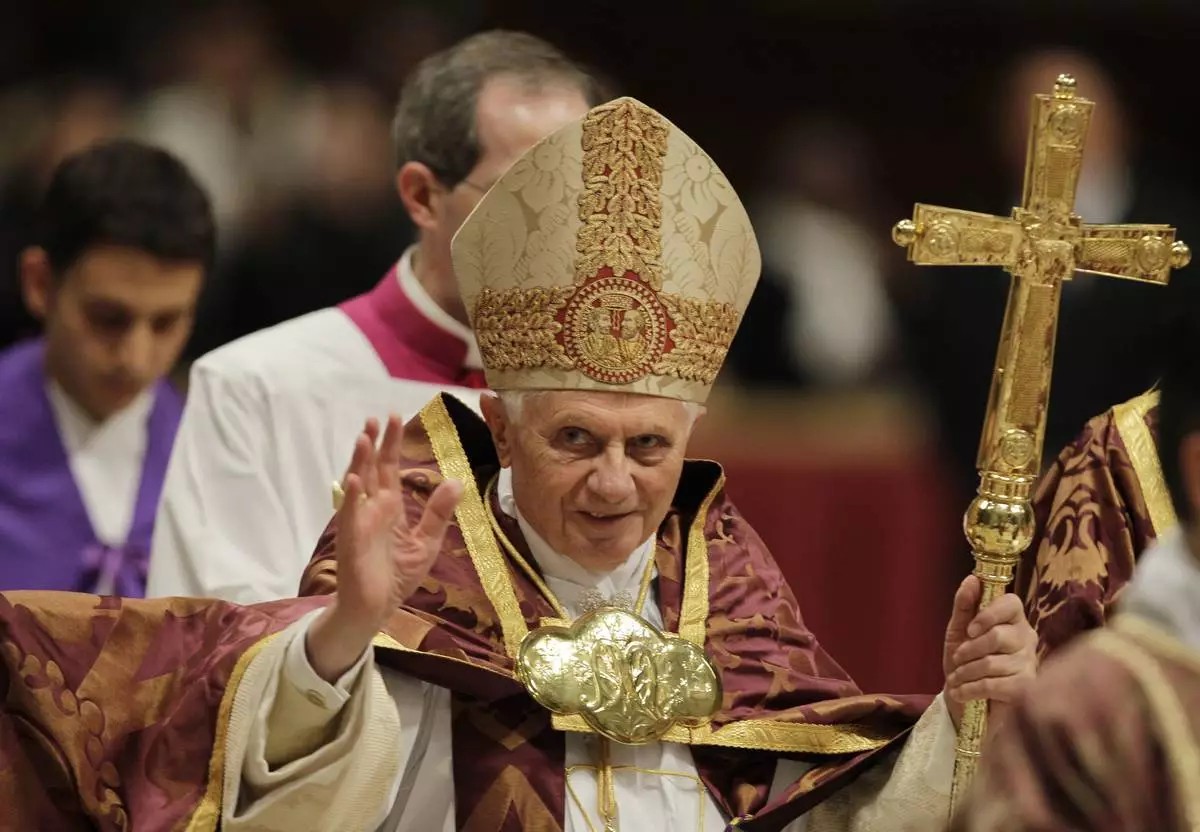
FILE - Pope Benedict XVI blesses the faithful as he arrives at St. Peter's Basilica in the Vatican, Dec. 16, 2010. (AP Photo/Alessandra Tarantino, File)
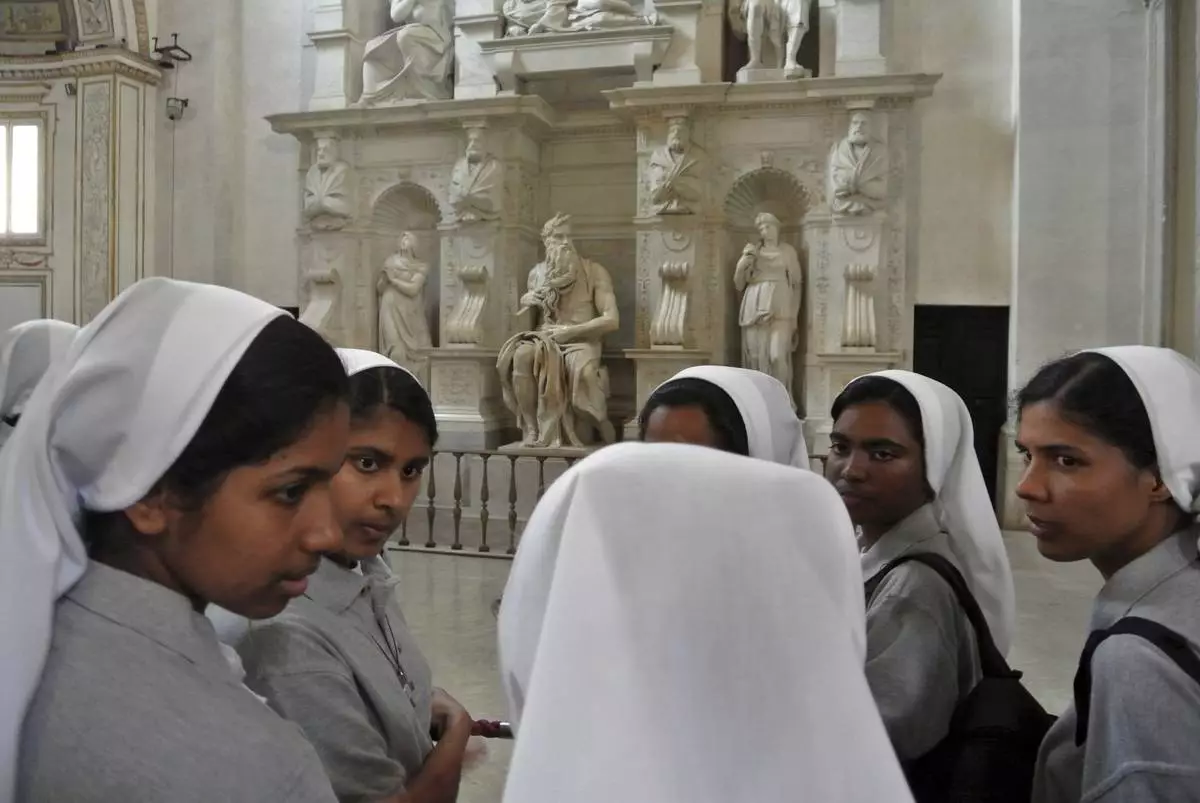
FILE - Nuns talk in front of Italian Renaissance artist Michelangelo Buonarroti's Moses statue, part of a funerary monument he designed for Pope Julius II inside San Pietro in Vincoli Basilica in Rome, July 2, 2013. (AP Photo/Gregorio Borgia, File)
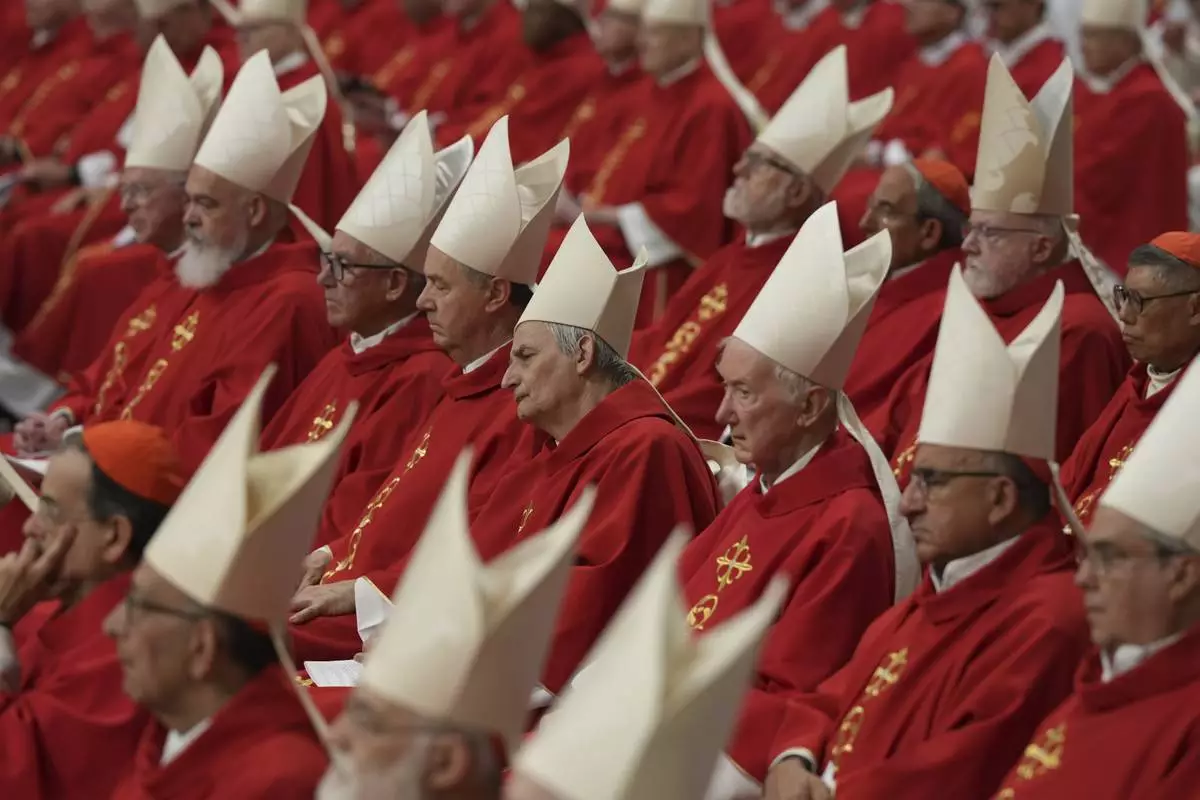
Cardinal Matteo Zuppi, centre, attends a mass on the third of nine days of mourning for late Pope Francis, in St. Peter's Basilica at the Vatican, Monday, April 28, 2025. (AP Photo/Andrew Medichini)
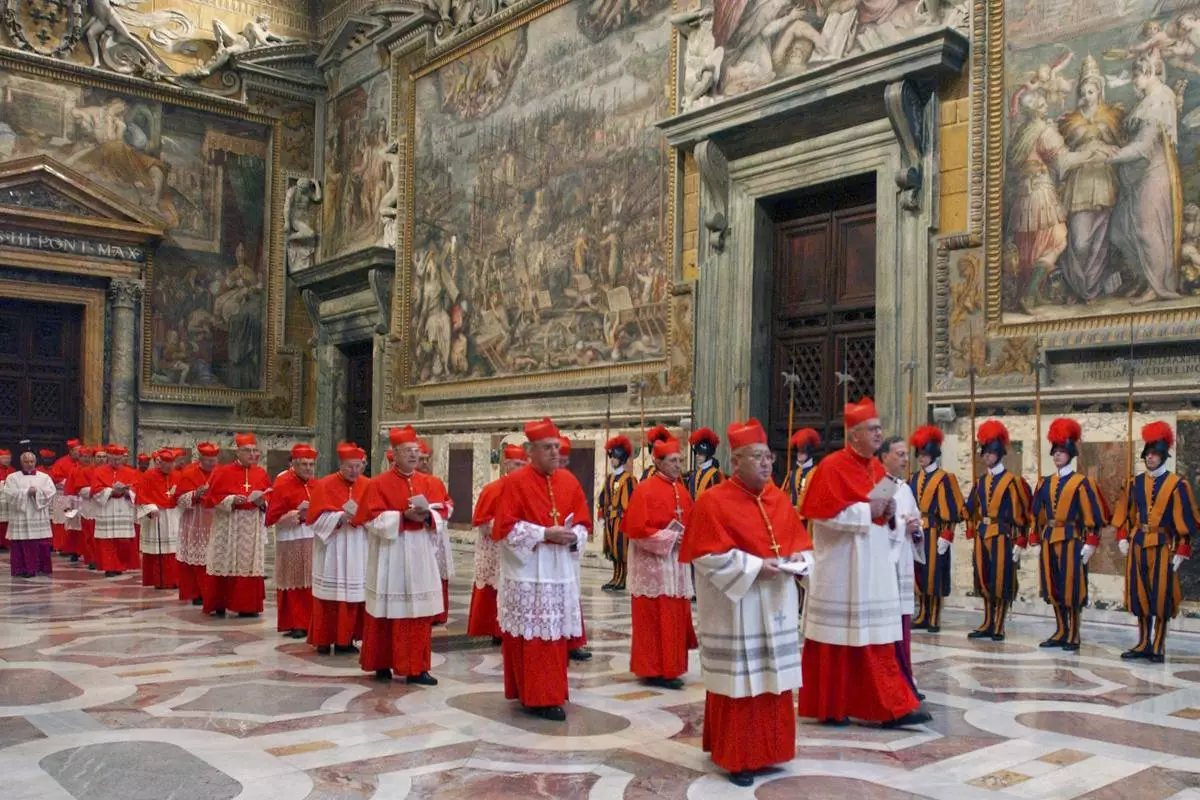
FILE - Cardinals walk in procession to the Sistine Chapel at the Vatican, at the beginning of the conclave, April 18, 2005. (Osservatore Romano via AP, File)




